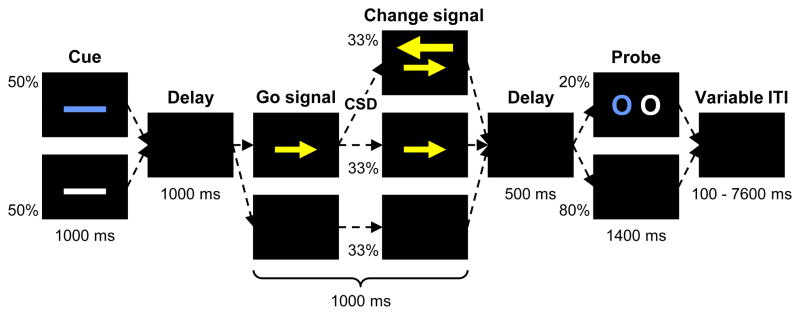Figure 3.
Schematic of a trial with a change-signal task (CST) embedded within a delayed-match-to-sample task (DMTS). Each trial began with a high (blue) or low (white) error-likelihood cue, the sample for the DMTS task. After a delay, there was either a go signal, a go signal followed by a change signal, or a continued delay. Participants were to respond to the go signal as quickly as possible with a compatible response, but to respond to the change signal instead if it subsequently appeared. The duration of the change signal delay (CSD) was determined by the error-likelihood cue and the participant s past performance. After a further delay, either the DMTS probe was presented or the delay continued. Finally, there was a variable inter-trial interval (ITI) before the next trial began. Percentages indicate proportion of trials for which each event occurred. Times in milliseconds indicate duration of each event.

